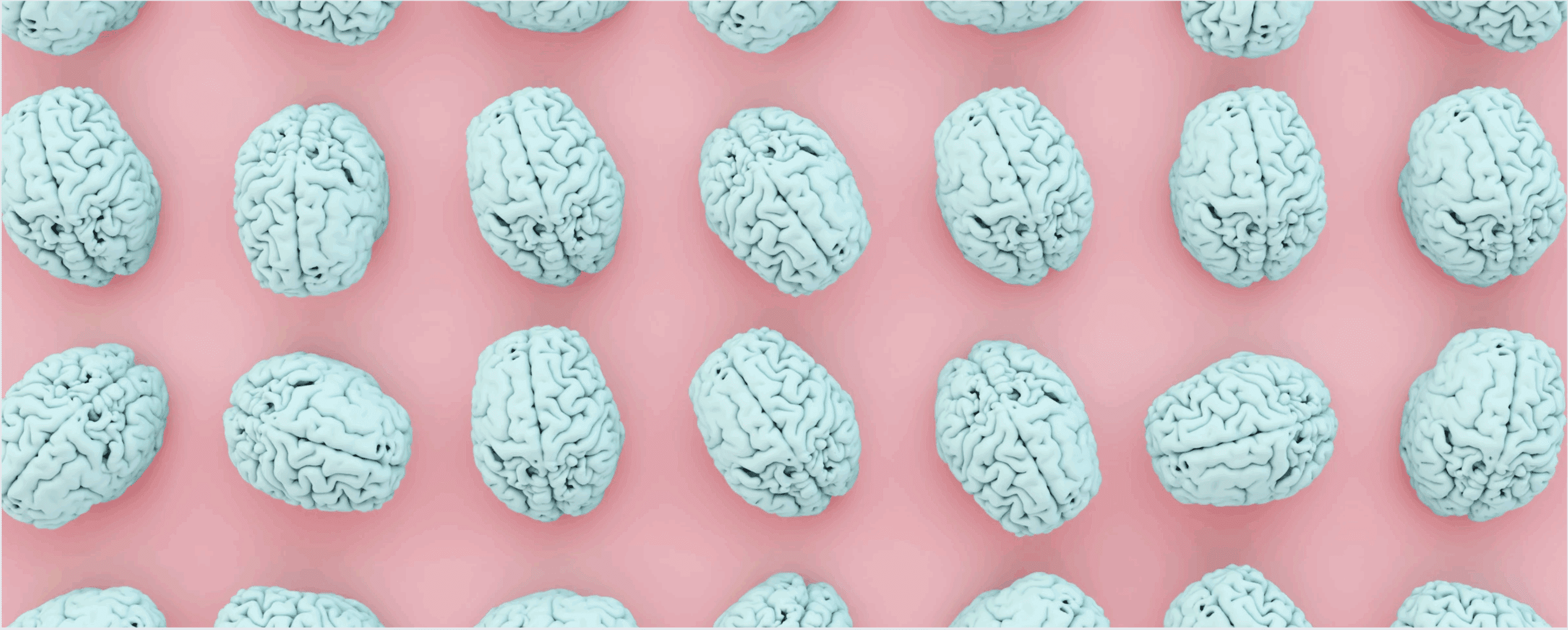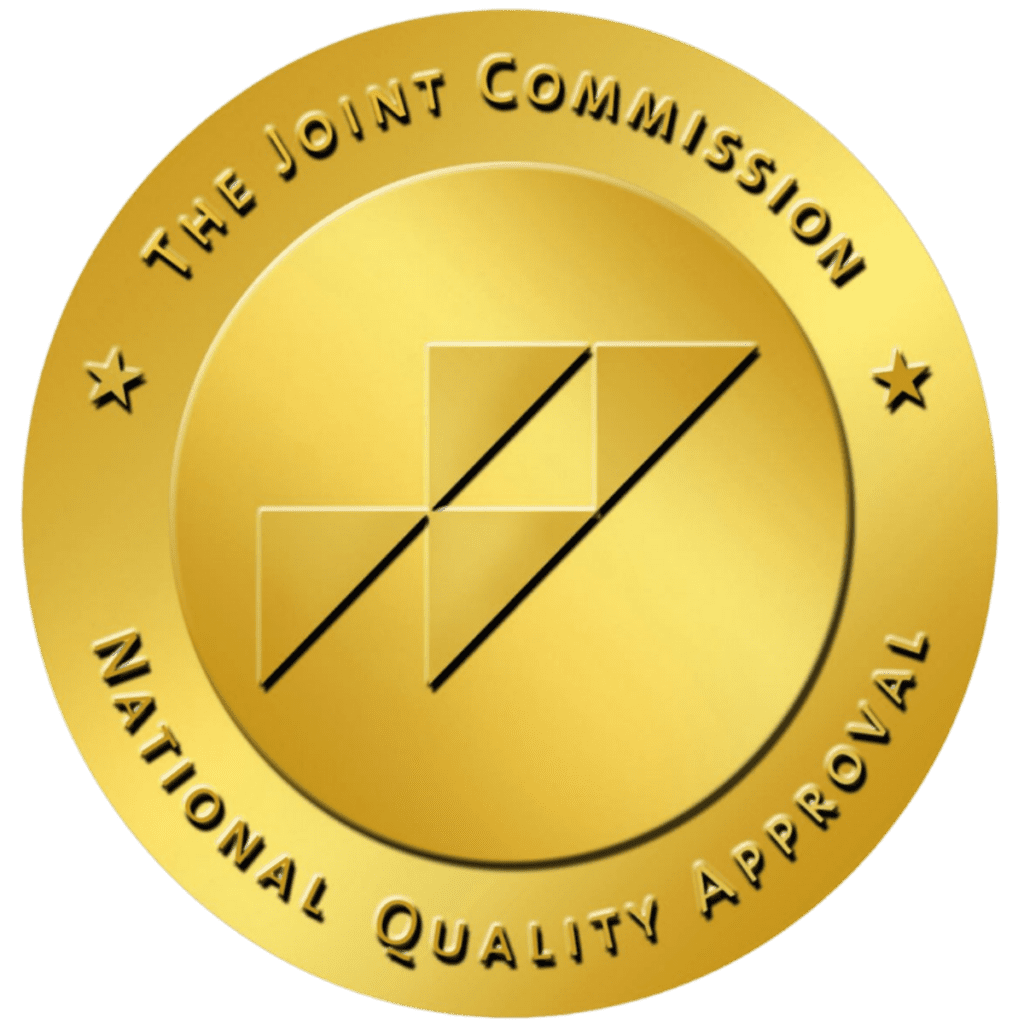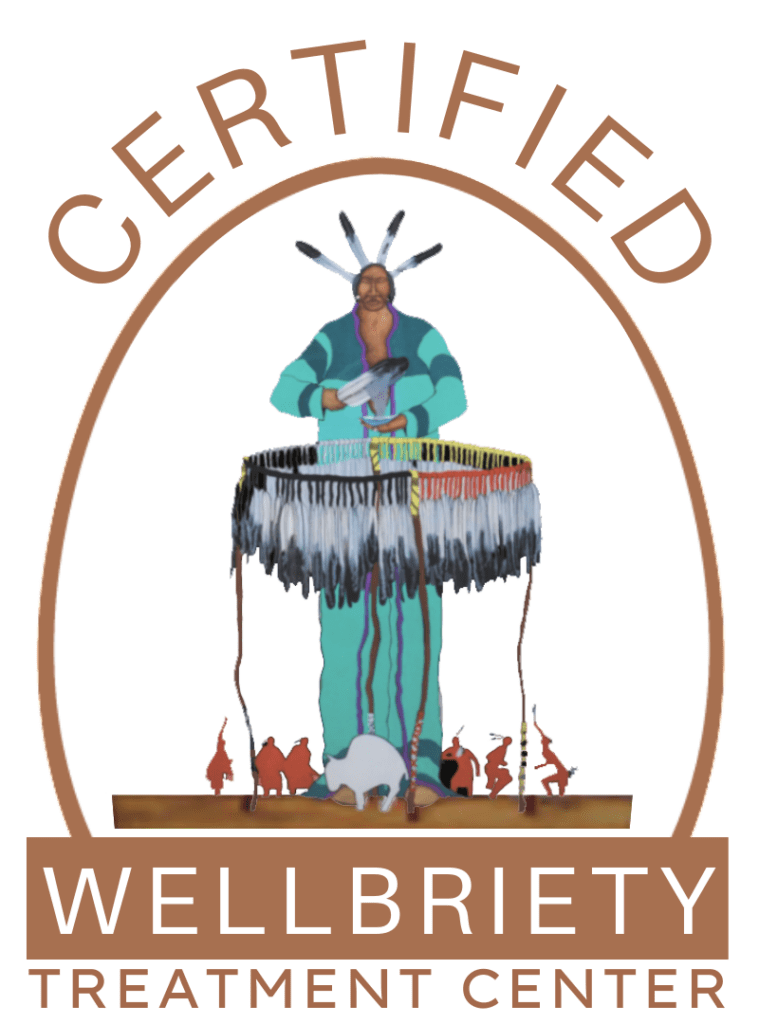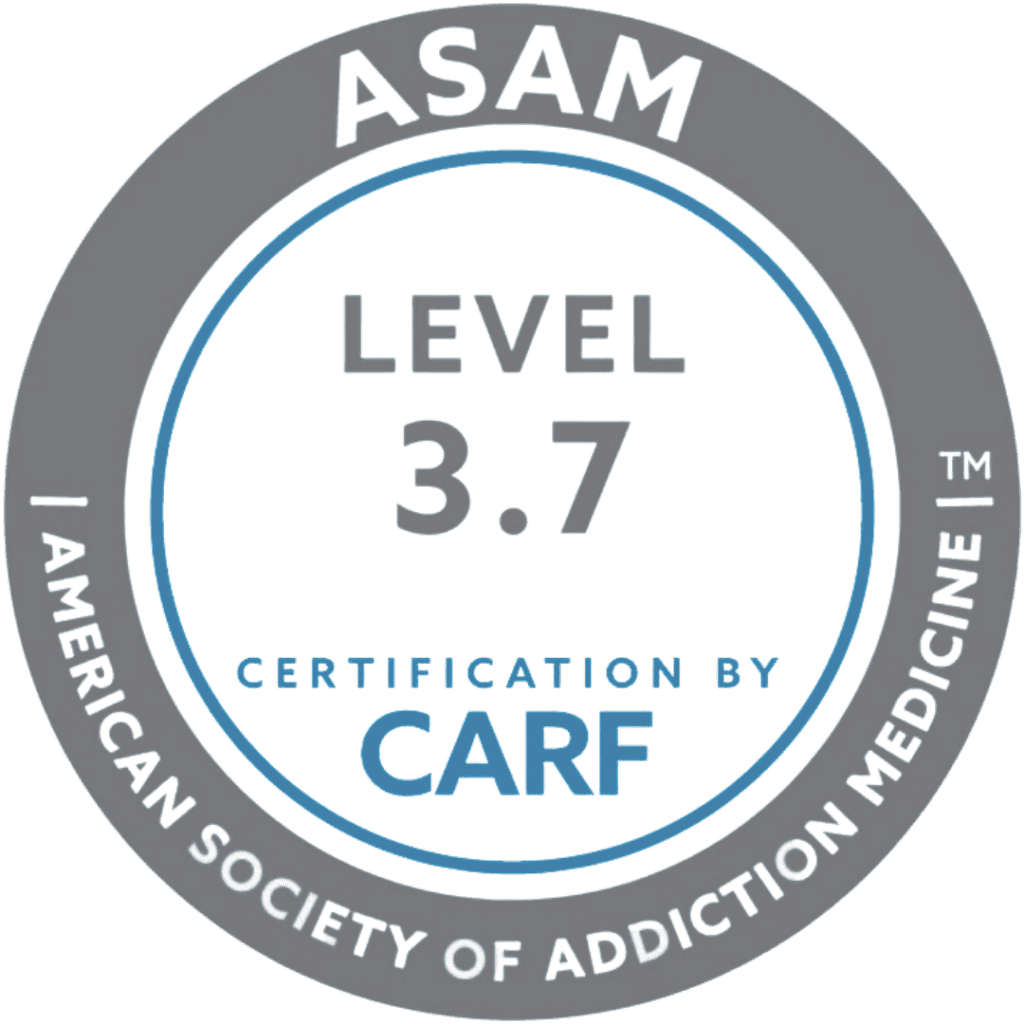Are you familiar with the medication “Xanax”? Perhaps you’ve heard about it from a friend, seen it mentioned online, or even taken it yourself. Xanax is a commonly prescribed medication used to treat anxiety disorders and panic attacks.
But what about “blue Xanax?” Are they a real thing or just a myth? Here, we delve into the world of Xanax, explore the truth about blue Xanax pills, and discuss key facts about the potential of addiction to this drug.
What Is Xanax?
Xanax, scientifically known as alprazolam, is a prescription medication categorized as benzodiazepine. Benzodiazepines are a class of drugs that act on the central nervous system to produce a calming effect. Whether it’s brand-name Xanax or a generic version, it’s prescribed to help alleviate symptoms such as excessive worry, nervousness, and tension.
Xanax is commonly prescribed for the following conditions:
- Generalized Anxiety Disorder (GAD): persistent and excessive worry about various aspects of life, including work, relationships, and health.
- Panic Disorder (PD): sudden and recurrent episodes of intense fear or discomfort, often accompanied by physical symptoms such as palpitations, sweating, and shortness of breath.
- Social Anxiety Disorder (SAD): an intense fear of social situations and interactions, leading to avoidance behaviors (also known as social phobia).
- Specific Phobias: irrational fears of specific objects or situations, such as heights, spiders, or flying.
A healthcare professional should keep close tabs on their patients whenever Xanax is prescribed. It’s also essential to address the underlying causes of anxiety, panic disorder, and phobias through therapy, lifestyle changes, and other forms of support.
Blue Xanax: Is It Real or Fake?
Blue Xanax is simply a variation of alprazolam, the generic form of the drug. The color of the pill is often influenced by the specific formulation and the manufacturer’s preference. As a result, Xanax comes in assorted colors and shapes. In general, white Xanax bars are the most commonly prescribed form. Generic versions can be found in a variety of shapes, such as round or oval tablets.
Whether someone comes across blue Xanax bars, green Xanax, yellow Xanax, or white Xanax, the color does not confirm the pill’s authenticity. Counterfeit drugs sold on the black market pose serious health risks, as they may contain incorrect dosages, harmful additives, or even different substances altogether. The only way to know if your Xanax is authentic is to receive a prescription from a licensed healthcare provider and pharmacy.
Xanax FAQ
Is Xanax an opioid?
No, Xanax is a benzodiazepine, or benzo, classified as a Schedule IV controlled substance in the United States. While it’s not an opioid, it has a recognized medical use but also carries a risk of dependence and misuse.
Is Xanax a prescribed substance?
Xanax is a commonly prescribed medication used to treat anxiety and panic disorders. However, Xanax is often prescribed for short-term use due to its potential for dependency and addiction.
How to get Xanax?
To legally obtain Xanax, you must have a valid prescription from a licensed healthcare provider. People may receive Xanax prescriptions from their psychiatrist following an in-depth mental health evaluation and anxiety disorder diagnosis.
Is long-term Xanax use safe?
Xanax prescriptions should be closely monitored and only renewed when necessary, as prolonged use can lead to tolerance and possibly addiction.
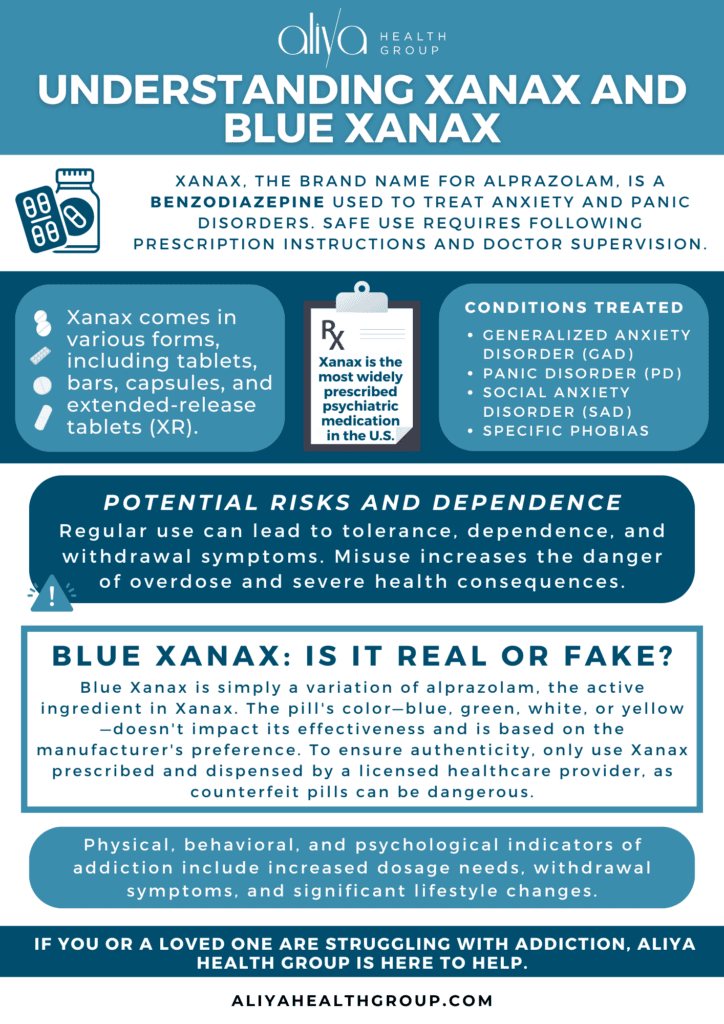
Get confidential help from our addiction and mental health treatment facilities located across the United States. Call to join one of our quality programs today!
Speak With Our Admissions TeamFacts About Anxiety Disorders
Anxiety is a widespread and often misunderstood mental health condition. It’s important to note that anxiety isn’t the same as stress. Stress is a response to a perceived threat in a situation, while anxiety is a stress reaction. Anxiety disorders affects millions of people worldwide, with recent statistics showing the following:
- GAD affects approximately 6.8 million adults in the United States, making up 3.1% of the population. Women are twice as likely to be affected as men, and GAD commonly co-occurs with major depression. Only 43.2% of individuals with GAD receive treatment.
- PD affects around 6 million adults in the U.S., accounting for 2.7% of the population. Similar to GAD, women are twice as likely as men to experience panic disorder.
- SAD impacts approximately 15 million adults in the U.S., making up 7.1% of the population. Unlike GAD and PD, SAD affects men and women equally and often begins around age 13. Alarmingly, many individuals with SAD suffer symptoms for a decade or more before seeking help.
- Specific phobias affect an estimated 19.3 million adults in the U.S., comprising 9.1% of the population. Women are twice as likely as men to develop specific phobias and symptoms typically emerge during childhood, with it starting at the age of 7 years old, on average.
What Happens if You Take Xanax Without Anxiety?
Taking Xanax without having anxiety can be potentially harmful and is not recommended. Xanax is a benzodiazepine medication commonly prescribed to individuals who suffer from anxiety disorders, panic attacks, or insomnia. It works by slowing down the central nervous system, causing relaxation and relieving symptoms of anxiety.
When abused, Xanax can have adverse effects on the body, such as:
- Drowsiness
- Confusion
- Impaired coordination
- Memory loss
- Slowed reflexes
The side effects of Xanax can interfere with daily activities and increase the risk of accidents, injuries, and even death. It is also important to note that Xanax may interact with other medications or substances such as alcohol, causing serious side effects. Therefore, it is essential to tell your doctor about any other medications or supplements you are taking before starting Xanax.
Is Xanax Addictive?
Taking Xanax without a valid prescription or medical supervision can lead to addiction and dependence. Benzodiazepines like Xanax are classified as controlled substances due to their potential for abuse and addiction. It is important to only take Xanax as prescribed by a doctor and to never share it with others.
While Xanax can be an effective medication for treating certain conditions, it should always be used carefully and under medical supervision. Misuse or abuse of Xanax can lead to serious consequences, and it is important to understand the risks and follow your doctor’s instructions. If you are concerned about yourself or a loved one’s use of Xanax, it’s important to reach out for help today.
Signs and Symptoms of Xanax Addiction
So, is Xanax addictive? While it can be an effective treatment for anxiety when used as prescribed, it also carries a risk of misuse, dependence, and addiction. Here are some signs and symptoms of Xanax addiction to be aware of:
- Physical dependence: Individuals may develop a tolerance to Xanax, requiring higher doses to achieve the desired effect.
- Psychological dependence: People may experience cravings for Xanax and feel unable to cope without it.
- Social and behavioral changes: Addiction to Xanax may lead to social withdrawal, neglect of responsibilities, and changes in behavior.
- Continued use despite negative consequences: Individuals with Xanax addiction may continue to use the drug despite experiencing adverse effects on their health, relationships, or work.
- Xanax withdrawal symptoms: Discontinuing Xanax abruptly can lead to distressing, potentially life-threatening withdrawal symptoms.
If you or someone you know is struggling with Xanax addiction, it’s essential to seek help from a qualified healthcare professional. Effective treatment for Xanax addiction typically involves a combination of detoxification, dual diagnosis treatment, medication management, therapy, and support groups.
Dangers of Xanax Withdrawal
Whether you have a Xanax prescription or are illegally abusing the drug, it is important to never abruptly stop taking the drug after long-term use.
Abruptly stopping the use of Xanax can cause withdrawal symptoms such as:
- Rebound anxiety
- Insomnia
- Irritability
- Seizures
- Death
When quitting Xanax, it is crucial to gradually decrease the dosage under medical supervision. To ensure your safety, benzo detox facilities will provide a medical taper, slowly reducing the amount of Xanax in your system. In doing so, they can prevent the onset of life-threatening Xanax withdrawal symptoms.
If you or a loved one is struggling with Xanax or any other drug, seek help from a professional substance abuse treatment center.
Looking for quality treatment for substance abuse and mental health that’s also affordable? Aliya Health Group's treatment facilities accept most major insurance providers. Get a free insurance benefits check now!
Check Your CoverageXanax Addiction Treatment
If you think you have a problem or a loved one is struggling with Xanax addiction, it’s important to get professional help. Aliya Health Group’s addiction treatment centers have helped thousands of people break free from dependence.
Addiction treatment has various levels of care, from inpatient to intensive outpatient to recovery homes. The program that’s right for you will depend on the severity of your addiction and what is most supportive of your life situation. Typically, Xanax addiction treatment plans include services such as:
- Thorough assessments
- Detoxification
- Withdrawal management
- Intensive therapies
- Holistic treatments
- Aftercare
Together, these addiction treatment services help those struggling with Xanax abuse find the path to lasting recovery. Our team of experienced professionals will work with you to create a personalized treatment plan that addresses your unique needs and goals.
Drug Addiction Assessment
A doctor or addiction specialist will document your medical history and ask questions about your Xanax use. They’ll assess and may diagnose co-occurring disorders like depression, anxiety, or post-traumatic stress disorder.
Drug Detox and Withdrawal Management
Dependence on Xanax happens quickly. Stopping abruptly can result in life-threatening withdrawal symptoms, such as seizures. Drug detox centers can provide a safe and monitored environment for individuals going through Xanax withdrawal. These detox programs can provide medical tapers to slowly wean off the drug and help manage Xanax withdrawal symptoms.
Therapy in Inpatient Treatment
After detox, you’ll begin addressing the core issues that led to Xanax abuse. You’ll do this through therapy and holistic approaches. Some of the most effective therapies include:
- Individual therapy: A form of psychotherapy that involves one-on-one sessions with a therapist to address emotional, psychological, or behavioral issues. The therapist helps the client gain insight into their challenges, develop coping skills, and make positive changes in their life.
- Group therapy: Like individual therapy, group therapy is a form of psychotherapy. It involves a session with a small group of people who share similar concerns or challenges, such as drug abuse. A therapist leads the session, which provides a supportive and confidential environment where group members can share their experiences, provide feedback, and learn from one another.
- Cognitive Behavioral Therapy (CBT): CBT is a form of therapy that helps someone recognize the connection between negative thoughts and actions. Your therapist will guide you in identifying fundamental beliefs that sustain harmful thought processes, provide strategies to confront undesirable thoughts constructively and help you substitute them with more beneficial alternatives.
- Dialectical Behavior Therapy (DBT): DBT is an offshoot of CBT that teaches mindfulness as a way to regulate emotions. The goal is to help someone become more mindful of their thoughts and feelings to better understand why they turn to drugs or alcohol. DBT teaches people how to manage stressful situations in a healthy way.
Dual Diagnosis Treatment
For people struggling with benzodiazepine addiction and mental health disorders like anxiety, dual diagnosis treatment can be highly effective. This type of treatment addresses both the addiction and the underlying mental health issue simultaneously, providing more comprehensive care.
Knowing that Xanax abuse often stems from deeper issues such as trauma, low self-esteem, or unresolved emotional pain, it’s important to address any harmful thought patterns that may fuel addictive behaviors. By treating co-occurring disorders and addressing these underlying beliefs in therapy, dual diagnosis treatment promotes long-term success in recovery.
Holistic Treatment
Aliya Health Group is focused on the person as a whole. That means focusing on the body, mind, and soul. Holistic treatment options include yoga, meditation, sound healing, nutrition counseling, and life skills training. The goal is to help someone develop skills they can use following rehab to maintain sobriety in the long run.
Aftercare
Once you’ve completed treatment, your team will work with you to develop a comprehensive aftercare plan for continuing in recovery. Most often, it includes ongoing therapy sessions and support group meetings. People can also choose to live in a sober living environment to help them transition back into daily life while still having a supportive community to lean on.
Getting Help for Xanax Addiction
Substance use disorders and Xanax addiction can be overcome. Having the right help can make all the difference. Our recovery center offers dual diagnosis treatment, family therapy, benzodiazepine addiction treatment, and drug detox programs for all. If you or a loved one is struggling with prescription drug addiction, we’re here to help.
Understanding the facts about anxiety and Xanax addiction can help you make informed decisions about your mental health and well-being. If you have any questions about blue Xanax, addiction, or anxiety, contact Aliya Health Group. Our drugs and alcohol program coupled with mental health treatment can help anyone get back on the right track.








